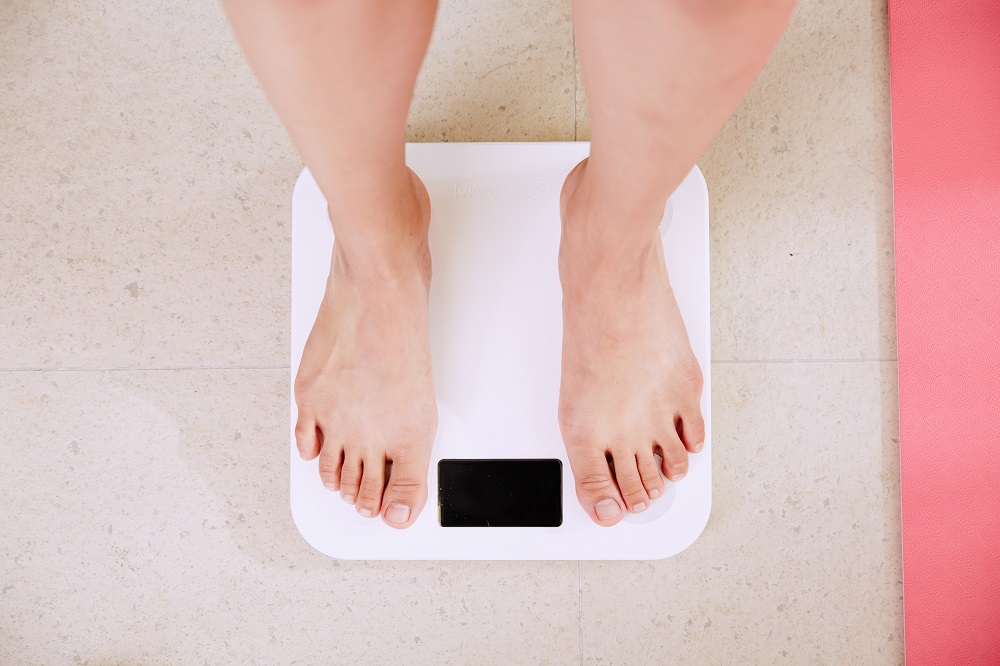Why Your Waist Measurement Matters More Than What You Weigh
Why Your Waist Measurement Matters More Than What You Weigh
Did you know that your waist measurement can tell you more than your scales?
Do you weigh yourself? Or is that a trigger for you? Do you feel great if your scales say the right thing but awful if it doesn’t? Or does the number on the scale motivate you?
What you weigh can matter but only to a certain extent.
I mean, it doesn't define you (obviously).
I find that weighing myself doesn’t really have any great (positive) effect to be honest. However, we have those scales that tell you your body fat, muscle, water and bone which I think is far more use. I want to make sure I’m getting rid of the body fat if I’m losing weight and not muscle, bone or water.
However, if you haven’t got a set of scales that give you those measurements, then getting a tape measure out can be just as good.
Let's look at your waist circumference (well...you look at yours and I'll look at mine).
Waist measurement (AKA “Belly Fat”):
Do you remember the fruity body shape descriptions being like an “apple” or a “pear”? The apple is rounder around the middle (you know – belly fat-ish or beer belly-ish) and the pear is rounder around the hips/thighs.
THAT is what we're talking about here.
Do you know which shape is associated with a higher risk of sleep apnea, blood sugar issues (e.g. insulin resistance and diabetes) and heart issues (high blood pressure, blood fat, and arterial diseases).
Yup – that apple!
And it's not because of the subcutaneous (under the skin) fat that you may refer to as a “muffin top”. The health risk is actually due to the fat inside the abdomen covering the liver, intestines and other organs there.
This internal fat is called “visceral fat” and that's where a lot of the problem actually is. It's this “un-pinchable” fat.
The reason the visceral fat can be a health issue is because it releases fatty acids, inflammatory compounds, and hormones that can negatively affect your blood fats, blood sugars, and blood pressure.
And the apple-shaped people tend to have a lot more of this hidden visceral fat than the pear-shaped people do. Unfortunately as we age, we tend towards a more apple shape as weight is gained around the middle.
So as you can see where your fat is stored is more important that how much you weigh.
Does my waist measurement mean I'm an apple or a pear?
If you’re a midlifer who’s trying to do something about the weight around your middle, it’s fairly likely that you’re an apple. However, it's pretty simple to find out if you're in the higher risk category or not. The easiest way is to just measure your waist circumference with a measuring tape. You can do it right now.
Women, if your waist is 35” or more you could be considered to have “abdominal obesity” and be in the higher risk category. Pregnant ladies are exempt, of course. The NHS recommend trying to lose some tummy fat if your waist is 31.5” or more.
For men the number is 40” to be considered high risk. The NHS recommend anyone with a waist measurement over 37” trying to lose some weight from around the middle.
Of course this isn't a diagnostic tool. There are lots of risk factors for chronic diseases. Waist circumference is just one of them.
If you have concerns definitely see your doctor.
But what can you do about that midlife weight around the middle?
Tips for helping reduce your waist measurment:
Eat more fibre. Fibre can help reduce belly fat in a few ways. First of all it helps you feel full and also helps to reduce the amount of calories you absorb from your food. Some examples of high-fibre foods are leafy green veggies, flax and chia seeds, avocado and blackberries.
Add more protein to your day. Protein reduces your appetite and makes you feel fuller longer. It also has a high TEF (thermic effect of food) compared with fats and carbs and ensures you have enough of the amino acid building blocks for your muscles.
Get rid of added sugars. This means ditch the processed sweetened foods especially those sweet drinks (even 100% pure juice). If you want help with this, join the FREE 5 day sugar free challenge
Move more. Get some aerobic exercise. Lift some weights. Walk and take the stairs. It all adds up.
Stress less. Seriously! Elevated levels in the stress hormone cortisol have been shown to increase appetite and drive abdominal fat. If you want to know more about how our hormones are connected to belly fat, check out this previous blog.
Get more sleep. Try making this a priority and seeing how much better you feel (and look).
Content Disclaimer
The information contained above is provided for information purposes only. The contents of this blog are not intended to amount to advice and you should not rely on any of the contents of this blog. Professional advice should be obtained before taking or refraining from taking any action as a result of the contents of this blog. Midlife Menu Ltd disclaims all liability and responsibility arising from any reliance placed on any of the contents of this blog.





Overeating during lockdown can be triggered by a rollercoaster of emotions or stress from homeschooling, looking after oldens or just trying to cope with working from home. Cravings, snacking and home baking can make overeating during lockdown very easy. So here's what to do to tackle the lockdown overeating. www.midlifemenu.com/blog/overeating-lockdown